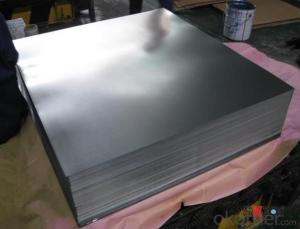Electrolytic Tinplates (ETP) Coil and Sheets for Foods Packaging
- Loading Port:
- Tianjin
- Payment Terms:
- TT OR LC
- Min Order Qty:
- 25 m.t.
- Supply Capability:
- 7000 m.t./month
OKorder Service Pledge
OKorder Financial Service
You Might Also Like
1.Structure of Electrolytic Tinplates (ETP) Coil and Sheets for Foods Packaging Description
Electrolytic Tin Plate Coils and Sheets for Foods Metal Packaging, is one thin steel sheet with a coating of tin applied by electrolytic deposition. Tinplate made by this process is essentially a sandwich in which the central core is strip steel. This core is cleaned in a pickling solution and then fed through tanks containing electrolyte, where tin is deposited on both sides. As the strip passes between high-frequency electric induction coils, it is heated so that the tin coating melts and flows to form a lustrous coat.
2.Main Features of the Electrolytic Tinplates (ETP) Coil and Sheets for Foods Packaging
Appearance – Electrolytic Tin Plate is characterized by its beautiful metallic luster. Products with various kinds of surface roughness are produced by selecting the surface finish of the substrate steel sheet.
Paintability and printability – Electrolytic Tin Plates have excellent paintability and printability. Printing is beautifully finished using various lacquers and inks.
Formability and strength – Electrolytic Tin Plates have got very good formability and strength. By selecting a proper temper grade, appropriate formability is obtained for different applications as well as the required strength after forming.
Corrosion resistance – Tinplate has got good corrosion resistance. By selecting a proper coating weight, appropriate corrosion resistance is obtained against container contents. Coated items should meet 24 hour 5 % salt spray requirement.
Solderability and weldability – Electrolytic Tin Plates can be joined both by soldering or welding. These properties of tinplate are used for making various types of cans.
Hygienic – Tin coating provides good and non toxic barrier properties to protect food products from impurities, bacteria, moisture, light and odours.
Safe – Tinplate being low weight and high strength makes food cans easy to ship and transport.
Eco friendly – Tinplate offers 100 % recyclability.
Tin is not good for low temperature applications since it changes structure and loses adhesion when exposed to temperatures below – 40 deg C.
3.Electrolytic Tinplates (ETP) Coil and Sheets for Foods Packaging Images
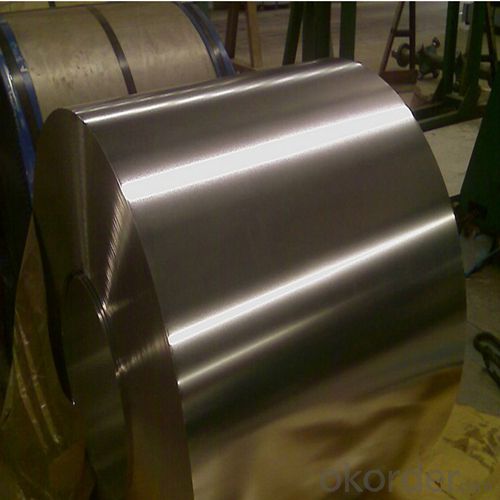

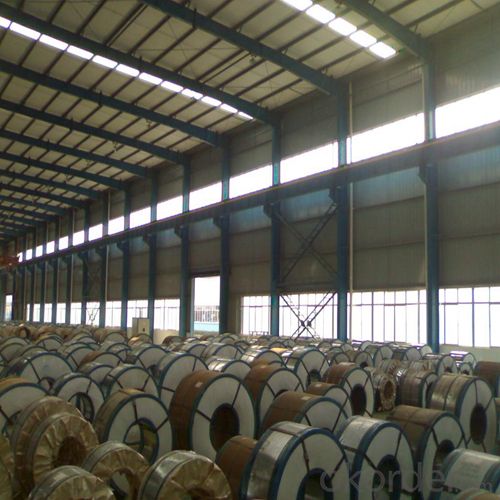
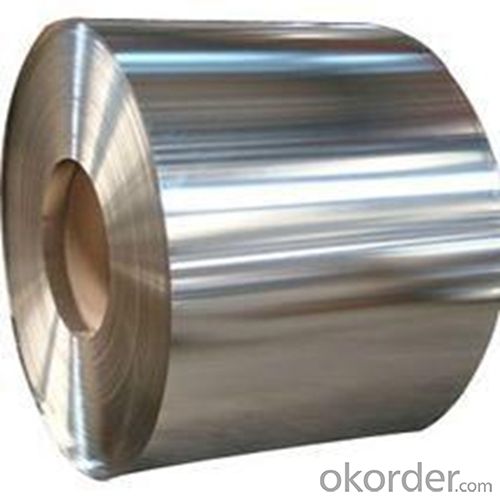
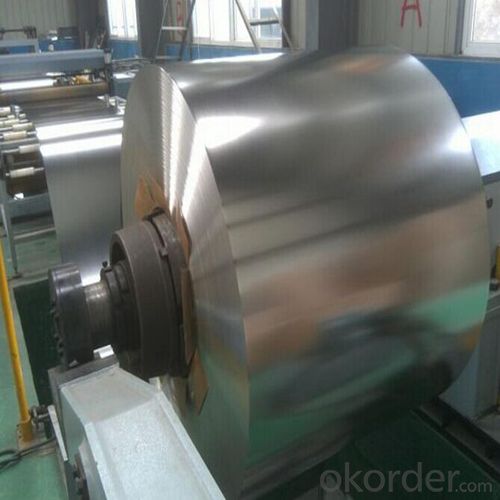
4.Electrolytic Tinplates (ETP) Coil and Sheets for Foods Packaging Specification
Standard | ISO 11949 -1995, GB/T2520-2000,JIS G3303,ASTM A623, BS EN 10202
|
Material | MR,SPCC |
Thickness | 0.15mm - 0.50mm |
Width | 600mm -1150mm |
Temper | T1-T5 |
Annealing | BA & CA |
Coil Inner Diameter | 508mm |
Weight | 6-10 tons/coil 1~1.7 tons/sheets bundle |
Passivation | 311 |
Oil | DOS |
Surface | Finish,bright,stone,matte,silver |
5.FAQ of Electrolytic Tinplates (ETP) Coil and Sheets for Foods Packaging
-How to place .an order or contact you ?
Please send us Email. we will give you a quick response in seconds .
- How is your quality ?
All our quality is prime even the secondary quality . We have many years experience
In this field with serious quality control standard . Advanced equipment, We welcome your visit to our factory .
- Q:Can tinplate be used for beverage cans?
- Yes, tinplate can be used for beverage cans. Tinplate is commonly used as a coating for steel cans, providing them with corrosion resistance and a shiny appearance.
- Q:How does tinplate compare to glass in terms of packaging applications?
- Tinplate is often preferred over glass for packaging applications due to its durability, lightweight nature, and cost-effectiveness. Unlike glass, tinplate is not prone to breakage, making it safer for shipping and handling. It also offers excellent barrier properties, protecting the contents from air, moisture, and light. Additionally, tinplate is recyclable and has a lower carbon footprint compared to glass, making it a more sustainable choice for packaging.
- Q:How is tinplate used in the cosmetics industry?
- Tinplate is commonly used in the cosmetics industry as packaging material for various products such as lip balms, creams, and powders. Its corrosion-resistant properties make it an ideal choice for ensuring the longevity and quality of these cosmetic items. Additionally, tinplate's ability to be easily printed on allows for attractive branding and labeling of cosmetic products.
- Q:What are the common testing methods for tinplate?
- Common testing methods for tinplate include visual inspection for surface defects such as scratches or dents, measurement of thickness using a micrometer or caliper, evaluation of coating adherence through tape or cross-hatch adhesion tests, assessment of corrosion resistance via salt spray or humidity tests, and determination of mechanical properties like tensile strength or elongation through tension tests.
- Q:How does tinplate packaging contribute to product protection against moisture?
- Tinplate packaging acts as a barrier against moisture due to its inherent properties. The tin coating on the steel substrate provides excellent resistance to corrosion, preventing moisture from reaching the product inside. This protective layer ensures that the packaging remains intact, maintaining the product's quality and preventing any damage caused by moisture.
- Q:What are the properties of tinplate?
- Tinplate is a type of steel coated with a thin layer of tin, which gives it several advantageous properties. It is highly corrosion resistant, making it ideal for packaging food and beverages. Tinplate is also malleable, allowing it to be easily formed into various shapes and sizes. It has excellent solderability, enabling tight and secure seals. Additionally, tinplate offers good heat resistance, electrical conductivity, and is lightweight.
- Q:How does tinplate packaging contribute to product protection during shipping?
- Tinplate packaging contributes to product protection during shipping by providing a durable and sturdy material that acts as a barrier against external elements. It offers resistance to impacts, ensuring that the product inside remains safe and intact. Additionally, tinplate packaging has excellent corrosion resistance, preventing damage caused by moisture or humidity during transportation. This protective feature helps in preserving the quality and extending the shelf life of the product, reducing the risk of damage or spoilage.
- Q:Can tinplate be used for pet food packaging?
- Yes, tinplate can be used for pet food packaging. Tinplate is a commonly used material for packaging due to its durability, corrosion resistance, and ability to maintain product freshness. It is often chosen for pet food packaging as it provides a protective barrier against moisture, oxygen, and light, ensuring the quality and safety of the food.
- Q:What are the causes of tinplate rusting and how to prevent them?
- The tin surface of the iron sheet is injured and exposed during the machining process to promote corrosion.Prevention: 1, not coated iron sheet, coated with oil after plating thickening. Effectively prevent water invasion and reduce damage to the process.2 can be painted on the iron sheet of appropriate paint, blocking the impact of corrosive substances.
- Q:How does tinplate contribute to the shelf life of canned products?
- Tinplate contributes to the shelf life of canned products through its ability to prevent corrosion and maintain product quality. The tin coating on the steel substrate acts as a barrier, protecting the can from rusting and preventing any reaction between the metal and the food inside. This helps to maintain the integrity of the can, ensuring that it doesn't leak or become contaminated. As a result, tinplate cans can effectively preserve the freshness, taste, and nutritional value of the canned products, extending their shelf life significantly.
1. Manufacturer Overview |
|
|---|---|
| Location | |
| Year Established | |
| Annual Output Value | |
| Main Markets | |
| Company Certifications | |
2. Manufacturer Certificates |
|
|---|---|
| a) Certification Name | |
| Range | |
| Reference | |
| Validity Period | |
3. Manufacturer Capability |
|
|---|---|
| a)Trade Capacity | |
| Nearest Port | |
| Export Percentage | |
| No.of Employees in Trade Department | |
| Language Spoken: | |
| b)Factory Information | |
| Factory Size: | |
| No. of Production Lines | |
| Contract Manufacturing | |
| Product Price Range | |
Send your message to us
Electrolytic Tinplates (ETP) Coil and Sheets for Foods Packaging
- Loading Port:
- Tianjin
- Payment Terms:
- TT OR LC
- Min Order Qty:
- 25 m.t.
- Supply Capability:
- 7000 m.t./month
OKorder Service Pledge
OKorder Financial Service
Similar products
New products
Hot products
Related keywords
